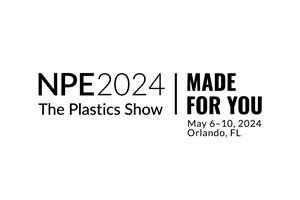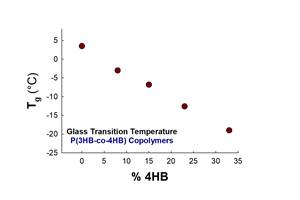The Recycling Collaboration That Is Making Circular Film a Reality
Nova Chemicals and Novolex are commissioning a large mechanical recycling facility for film to film.
In 2023 Nova Chemicals announced its plans to develop a mechanical recycling plant with at a former Ford manufacturing site in Connersville, Indiana. The idea was to build a sophisticated system which would reprocess film, at a scale of over 100 million pounds per year, and produce high-quality recycled polyethylene for Nova customers, thus bringing recycled material back into high-value film applications.
Scroll to unlock this premium content if video does not play.
Today, the facility is alive with activity as the new equipment is being installed and commissioned. Already, reclaimed film is being shredded, sorted, washed, dried, densified, extruded and pelletized as processes are tuned and sorting optimized, with more equipment still to be added. The mechanical recycling operation occupies about one-third of the 1.3 million-square-foot Connersville site, including enough space to store about 12 million pounds of recovered film bales. The amount is equivalent to one month of operation at the plant’s anticipated full capacity.
An Experienced Recycling Partner
The Indiana facility, called Syndigo One, is a collaboration between Nova Chemicals and Novolex, a packaging manufacturer, which will operate the facility.
“The question was: how do we do this quickly? This is new for us,” says Nova CEO Roger Kearns. “To make sure that we can bring this to fruition and be successful quickly, we looked to partnerships, and it’s great to have Novolex here with us to make that happen.”
Nova brings its experience as a producer of polyethylene resins for high-value applications, and Novolex brings experience in operating mechanical recycling facilities.
“We’ve been a recycler for 17 years, so we’re excited about the opportunity because we know we can do this. The opportunity to participate in a facility like this, making these phenomenal products, is tremendous,” says Stan Bikulege, Novolex CEO.

Nova’s large warehouse in Connersville has space for storing recovered film. One month of operational capacity is approximately 12 million pounds. Source (all images): Matt Stonecash
Film-to-Film Recycling Starts at the Source
The feedstocks for making Nova’s recycled PE are classified as postconsumer, but they don’t come from material recovery facilities. Rather, the consumer in this case is the user of film which is not primary product packaging but used at other points along the supply chain.
“We try to avoid any multilayer films, says Adrianne Tipton, Novolex CTO. “We source films like stretch wrap or pallet wrap, materials that have gone through their useful life.” Recovered material comes from distribution centers, “back-of-house” retail operations or from transfers of parts between manufacturers. These sources can provide feedstock of sufficient quality and consistency to be made into high-grade pellets, both their design and cleanliness make them more suitable for recycling than post-retail films would be.
The objective is to capture film that might today be processed with other materials to make durable goods, or may not be recycled at all. This can mean working with generators of waste film that have not previously been part of a collection program, to put processes in place to separate film from other waste materials.
According to Tipton, changing processes can take some work, but often retailers are quite willing to do it when they can see the upside. This means not only being paid for material that was previously only wasted but potentially creating a circularity story for the brand.
“They really like it if we can close that loop. They can get their own waste back as packaging and that’s a great story for them,” says Greg DeKunder, vice president of Nova Circular Solutions.

A bale is loaded onto the feed conveyor for the bale opening machine in Connersville, a rare hands-on step in an operation that is largely automatic.
From Bale to Pellet Automatically
Once a bale is loaded onto the first conveyer, operations proceed automatically. A series of conveyors carry the plastic from station to station, strategically placed bunkers hold materials for the next step. The washing systems govern the process — they speed up the shredding lines when they are ready for material and push into extrusion as the material builds up.
Bales first pass through a bale opener, with an integrated saw which automatically cuts the wires. This eliminates manual bale opening, a potentially dangerous operation. Initial shredding by Jupiter shredding machines reduces size to about a square foot. The film then passes over a shaker table, which ensures that it is spread out appropriately across the surface to ensure line-of-sight for sortation, the next step. sorters use both optical and near-IR sorting to remove unwanted materials like polypropylene or PET, colored materials, paper or other contaminants. The system is also a data source, providing data on how much of different types of contaminants are present. This data can then be used to work with suppliers on improving the starting material.
Prime materials are separated on one conveyor while rejected materials follow another conveyor which brings them back into another sorting machine. This secondary sorting step further classifies material, with lower grades of usable plastic going for sale to asphalt producers, composite lumber manufacturers and chemical recyclers.
From there material moves on to a second shredding station, which reduces the size down to about 1-2 square inches. This enables the material to be washed in the next step. The washing system uses friction and water to remove contaminants from the surface of the material. “We like to say ‘we sip water here, we don’t gulp’,” says Alan Schrob, director of mechanical recycling at Nova Chemicals. Used water from the washing process is treated and recirculated back into the process. After washing, the material is dried and delivered to a large bunker. The bunker ensures continuous production, as separate segments of the plant turn off and on automatically as needed.
Before the film can be fed into an extruder, it must be densified. The densification system takes irregular film pieces and turns them into small clumps reminiscent of packaging peanuts. These are dense enough to go into the recycling extruder. Intrarema Duafil systems from Erema provide two filtration steps to further purify the melt before it is made into pellets. After pelletization, the material goes into Intrarema Refresher vessels. Pellets will spend 8 hours circulating, to remove any residual volatiles that may otherwise give the product an unwanted odor.

Syndigo recycled LLDPE pellets from Nova Chemicals.
Secondary Recovery Captures Value
At each step of this automated process, recovery is designed in. There is metal from the debaling and demetalizing steps, cardboard (also from debaling), fines that are captured after initial shredding, filtrate from the extrusion process and, of course, all the plastic material which is not suitable for making prime recycled pellets. This will include any traces of colored polyethylene, polypropylene, PET or other polymers that stow away on incoming bales. “Every piece of film that enters this warehouse will not go to landfill,” Schrob says. In all, the plant will have a total of 12 sorting systems when fully operational. Materials “rejected” from the initial sort for Syndigo-worthy material pass through subsequent stages to identify and isolate material to capture the maximum possible value.
Prime Grade, the Primary Target
In the end, the completed material is stored in one of 13 silos. Of these, 12 are for prime material, 6 of which are blending silos. Only one is for storing off-grade material. “We don’t intend on making a lot of off-grade,” Schrob says.
The process results in a pellet suitable for the high-value applications that Nova is targeting for its Syndigo PE products. The facility’s lab is equipped with a small film extrusion line with an inline optical system scanning for gels, in order to verify functionality of the finished product. “Our objective is to take material that has been going to landfill a good portion of the time, and turn it into something that you’re finding not just in plastics but in really high end use,” Roger Kearns says.
These can include even food grade applications, as Nova has already received a no objection letter (NOL) from the FDA for the Connersville operation. Alan Schrob attributes this to two key processes: rigorous auditing to ensure that the incoming product is suitable for food grade use, and the ability to remove contaminants like paper, glue and labels from used film. “This facility is designed specifically for that,” Schrob says.
The new facility is expected to create 100-125 jobs and produce 100-120 million pounds of prime grade recycled resin per year when it reaches full operational capacity, sometime in 2026. Nova is already working on a design for a subsequent plant, in anticipation of the successful proof of viability at Syndigo One.
Related Content
Processing Megatrends Drive New Product Developments at NPE2024
It’s all about sustainability and the circular economy, and it will be on display in Orlando across all the major processes. But there will be plenty to see in automation, AI and machine learning as well.
Read MoreFilm Extrusion: Boost Mechanical Properties and Rate of Composting by Blending Amorphous PHA into PLA
A unique amorphous PHA has been shown to enhance the mechanical performance and accelerate the biodegradation of other compostable polymers PLA in blown film.
Read MoreShredding Thin Film: How to Do It Right
While many processors recoil at this task, a little know-how in shredding equipment, processing, and maintenance should add the necessary confidence.
Read MoreBreaking News From NPE2024
Here is a firsthand report of news in injection molding, extrusion, blow molding and recycling not previously covered.
Read MoreRead Next
High Quality PCR With Mechanical Recycling Is Within Reach
Successful mechanical recycling of postconsumer materials requires market analysis, understanding requirements and building relationships across the value chain.
Read MoreLead the Conversation, Change the Conversation
Coverage of single-use plastics can be both misleading and demoralizing. Here are 10 tips for changing the perception of the plastics industry at your company and in your community.
Read MoreSee Recyclers Close the Loop on Trade Show Production Scrap at NPE2024
A collaboration between show organizer PLASTICS, recycler CPR and size reduction experts WEIMA and Conair recovered and recycled all production scrap at NPE2024.
Read More












